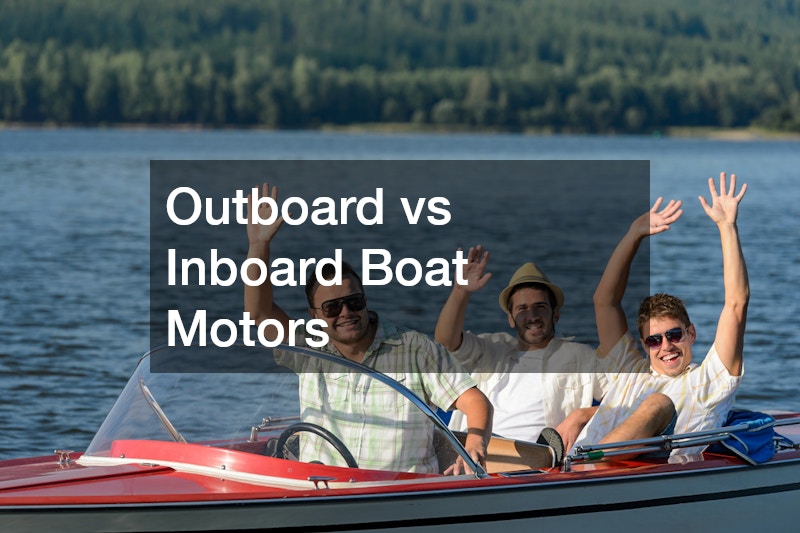Outboard vs Inboard Boat Motors

When choosing a boat, one of the most important decisions you’ll make is selecting the right motor type. Outboard and inboard motors are the two main options available, each offering its own advantages depending on the type of boating you plan to do. Understanding the differences between outboard vs inboard motors will help you determine which is best suited for your needs. Below, we’ll explore the key factors to consider when making this choice.
Outboard Motors: Pros and Cons
Outboard motors are mounted externally on the back of the boat, making them easy to identify. One of the biggest advantages of outboard motors is their versatility. Since they are located on the outside of the boat, they can be easily removed, serviced, or upgraded, which is appealing for many boaters. This makes outboards especially popular for smaller boats, fishing vessels, and those used in shallow waters.
Outboards are also praised for their maneuverability. Their design allows for excellent steering control, especially when navigating tight spaces or docking. Because they tilt up and down, outboard motors are ideal for use in shallow water, as the propeller can be lifted out of harm’s way.
However, there are a few downsides to outboard motors. Their external position means they are exposed to the elements, which can lead to more frequent maintenance or wear and tear. Outboards also tend to be noisier than inboard motors, which could be a consideration if you’re looking for a quieter ride.
Inboard Motors: Pros and Cons
Inboard motors, on the other hand, are installed inside the boat’s hull. This positioning allows for a cleaner, more streamlined look and better protection from the elements. Inboard motors are typically preferred for larger boats, watersports vessels, and boats designed for extended trips on the water.
One of the key advantages of inboard motors is their power. They are often more powerful than outboard motors, making them a better choice for towing activities like wakeboarding or water skiing. Inboard motors also provide a quieter ride since the engine is enclosed inside the boat, reducing noise and vibration.
However, inboard motors come with some disadvantages. They are more difficult to access for repairs or maintenance due to their internal location. Additionally, inboards don’t offer the same maneuverability as outboards, especially in tight spaces or shallow waters. This makes them less ideal for fishing boats or smaller crafts that need more precise steering.
Which is Right for You?

When deciding between outboard vs inboard motors, consider your boating style, the type of water you’ll be navigating, and how much maintenance you’re willing to handle. Outboard motors are typically better for small to medium boats and offer great maneuverability, while inboard motors provide more power and a cleaner aesthetic for larger vessels.
